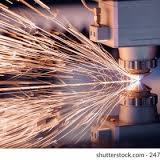Aluminum is one of the most widely used materials in modern manufacturing due to its lightweight, strength-to-weight ratio, and excellent machinability. From aerospace components to consumer electronics, aluminum parts are essential in producing reliable and high-performance products. CNC (Computer Numerical Control) machining has become the preferred method for working with aluminum, as it delivers precise, repeatable, and cost-effective solutions.
However, while aluminum is highly machinable, manufacturers also face certain challenges when producing CNC-machined aluminum parts. This article explores the benefits of CNC machining aluminum, the common challenges involved, and how businesses can overcome them.
Why Aluminum is Popular in CNC Machining
Aluminum is a versatile material with properties that make it ideal for a wide range of industries. Its popularity stems from:
- Lightweight nature – About one-third the weight of steel.
- High strength-to-weight ratio – Strong enough for structural applications yet light enough to reduce load.
- Corrosion resistance – Naturally resistant to rust, especially when anodized.
- Thermal and electrical conductivity – Useful in electronics and heat-dissipation applications.
- Cost-effectiveness – More affordable compared to titanium or other exotic metals.
Benefits of CNC Machining Aluminum Parts
1. Excellent Machinability
Aluminum is soft compared to steel and titanium, which makes it easier to cut and shape. CNC machines can achieve high speeds and feeds, reducing machining time and costs.
2. High Precision and Accuracy
Aluminum can be machined to tight tolerances, often within microns. This makes it suitable for industries like aerospace, medical, and automotive, where accuracy is critical.
3. Lightweight and Strong
CNC-machined aluminum parts combine low weight with high durability. This benefit is especially important in industries like aerospace, where reducing weight improves fuel efficiency.
4. Corrosion Resistance
Aluminum naturally forms a protective oxide layer, making it resistant to corrosion. With anodizing or other surface finishes, this resistance can be further enhanced.
5. Aesthetic and Surface Finishes
CNC machining delivers smooth surfaces, and aluminum can be anodized or polished to achieve visually appealing results. This is a key benefit for consumer electronics and luxury products.
6. Recyclability
Aluminum is highly recyclable without losing its properties. This makes it an environmentally friendly choice for manufacturers focusing on sustainability.
7. Versatility in Applications
From small prototypes to large structural components, CNC machining makes aluminum adaptable for different industries.
Common Challenges in CNC Machining Aluminum
1. Built-Up Edge (BUE) Formation
- Aluminum’s softness can cause chips to stick to cutting tools, leading to poor surface finishes and tool wear.
- This requires careful selection of cutting tools and coatings.
2. Tool Wear and Overheating
- At high speeds, aluminum generates significant heat, which can cause tool wear and dimensional inaccuracies.
- Proper coolant and lubrication are essential to manage heat.
3. Surface Finish Issues
- If not machined correctly, aluminum surfaces can show scratches, chatter marks, or poor finishes.
- Advanced cutting strategies are needed to maintain quality.
4. Material Variability
- Different aluminum grades (e.g., 6061, 7075, 2024) have varying properties.
- Some grades are more prone to warping, cracking, or difficult cutting.
5. Chip Evacuation
- Aluminum produces long, stringy chips that can clog the cutting area.
- Proper chip control tools and high-presure coolant systems are required.
Best Practices to Overcome CNC Machining Challenges in Aluminum
- Use the Right Cutting Tools – Carbide tools with sharp edges and special coatings (like TiB2) reduce sticking and improve surface finishes.
- Optimize Cutting Parameters – Adjusting feed rate, spindle speed, and depth of cut helps prevent overheating and tool wear.
- Coolant and Lubrication – Applying high-pressure coolant ensures chips are flushed away and temperatures remain controlled.
- Choose the Right Aluminum Alloy – For strength, use 7075; for general applications, 6061; for aerospace, 2024; and for decorative finishes, 5052.
- Post-Machining Finishes – Processes like anodizing, polishing, bead blasting, or powder coating enhance durability and aesthetics.
Applications of CNC Machined Aluminum Parts
Aerospace
- Lightweight structural components
- Engine housings and brackets
- Landing gear parts
Automotive
- Engine blocks, transmission housings
- Lightweight performance parts
- Heat exchangers
Medical Industry
- Surgical instruments
- Prosthetics and implants
- Diagnostic equipment parts
Electronics
- Smartphone and laptop casings
- Heat sinks
- Connectors and housings
Consumer Products
- Bicycle frames and components
- Luxury watches and accessories
- Sporting goods
CNC Machining Aluminum vs Other Materials
| Feature | Aluminum | Steel | Titanium | Plastics |
|---|---|---|---|---|
| Weight | Very Light | Heavy | Light | Very Light |
| Strength | Medium-High | Very High | Very High | Low-Medium |
| Machinability | Excellent | Moderate | Difficult | Easy |
| Corrosion Resistance | Good (Anodized) | Poor | Excellent | Varies |
| Cost | Affordable | Moderate | Expensive | Low |
This comparison shows why aluminum is the preferred balance of cost, performance, and machinability.
Future of CNC Machining Aluminum Parts
With advances in automation, AI-driven machining, and hybrid manufacturing (CNC + 3D printing), the future of aluminum part production is moving toward greater efficiency and innovation. Sustainable machining practices, such as coolant recycling and minimal lubrication techniques, will further improve cost-effectiveness and reduce environmental impact.
As industries demand lighter, stronger, and more complex parts, aluminum will remain at the forefront of CNC machining.
Conclusion
CNC machining for aluminum parts offers a powerful combination of lightweight strength, machinability, precision, and versatility. While challenges such as tool wear, chip evacuation, and heat generation exist, they can be effectively managed with the right strategies, tooling, and machining parameters.
From aerospace and automotive to medical devices and consumer electronics, CNC-machined aluminum parts play a critical role in modern manufacturing. By leveraging the benefits of aluminum and addressing its challenges, manufacturers can produce high-quality, reliable, and cost-effective components that meet the demands of today’s fast-paced industries.



